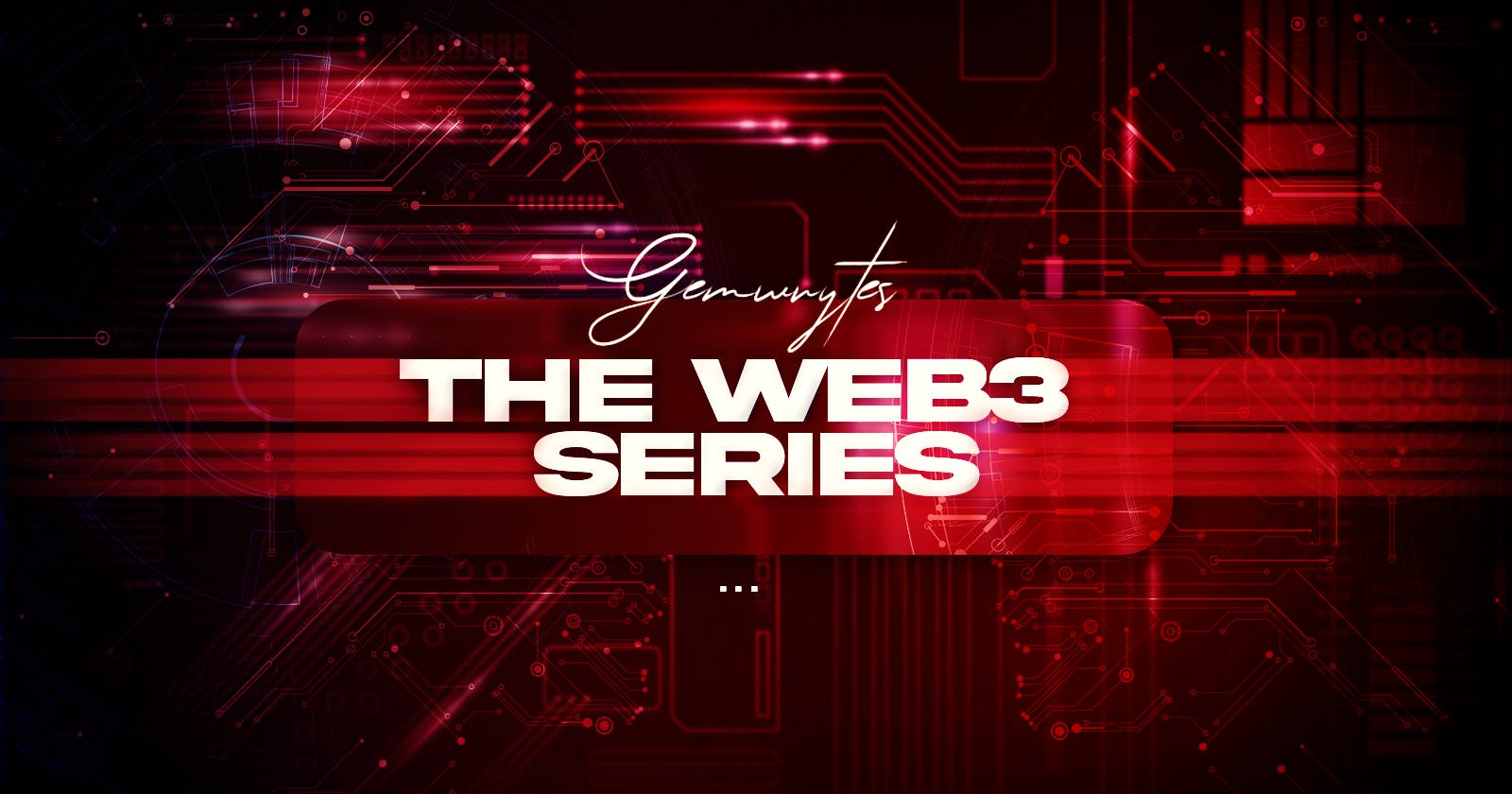Web3 (also known as Web 3.0[1][2][3]) is an idea for a new iteration of the World Wide Web which incorporates concepts such as decentralization, blockchain technologies, and token-based economics. ~Wikipedia.
INTRODUCTION
The internet has come a long way since its inception, and we are now at the inception of a new era with the emergence of Web 3.0. With its decentralized infrastructure and advanced features such as smart contracts, tokenization, and whatnot, Web 3.0 promises to revolutionize the way we interact with the internet and each other. In this article series, we will explore the various aspects of Web 3.0, including its technical underpinnings, potential use cases, and broader implications for society. Join us on this journey as we dive deep into the exciting world of Web 3.0 and discover what the future of the internet has in store for us.
OVERVIEW OF TECHNICAL CONCEPTS
On the journey from being a Web 3 enthusiast to becoming a Web 3 expert, certain concepts need to be understood.
These concepts are what lays the foundation upon which Web 3 is built...
They are:
• The Blockchain technology
• The Smart contracts
• Decentralized applications
• The concept of Tokenization
These concepts would be discussed in detail throughout this series.
At the heart of Web 3.0 lies the blockchain; a decentralized ledger technology that enables secure and transparent transactions without the need for intermediaries. With blockchain as the foundation, Web 3.0 is built on top of decentralized applications (dApps), which are hosted on peer-to-peer networks rather than centralized servers. These dApps are powered by smart contracts, self-executing contracts that automate the negotiation and enforcement of agreements between parties. Tokenization; the process of creating digital assets on the blockchain, allows for new forms of ownership and value exchange.
USE CASES
Web 3.0 has the potential to disrupt many industries, from finance to healthcare to gaming.
• One of the most promising use cases of Web 3.0 is Decentralized Finance (DeFi), which enables anyone with an internet connection to access financial services without intermediaries such as banks.
• Another use case is digital identity (DID); which could provide individuals with greater control over their data and reduce the risk of identity theft.
• It could also give a new insight into the social media (entertainment) industry. With Web 3.0, users can own social media accounts with little or no restrictions placed on how they utilize the platform. This is a result of the decentralized system of this web.
• Web 3.0 could also transform the gaming industry by enabling true ownership of in-game assets and allowing players to earn real-world value for their time and effort spent.
These and more of the benefits (use cases) of Web 3.0 will be explained in depth during this series.
CHALLENGES AND LIMITATIONS
While the potential of Web 3.0 is vast, there are still significant challenges and limitations that need to be addressed. Some of the biggest challenges are:
• Scalability: Blockchain networks can become congested and slow when dealing with large volumes of transactions.
• Interoperability between different blockchain networks is also an issue, as it can be difficult to transfer assets between different blockchains. Although this is breached by a technology called "bridge" which allows for the transfer of information from one Blockchain to another, it is still less effective.
• In addition, the adoption of Web 3.0 technologies is still in its early stages, and there are concerns about the lack of regulation and potential risks associated with new and untested technologies.
LOOKING INTO THE FUTURE
Despite the challenges and limitations, the potential of Web 3.0 is immense. It has the potential to transform the internet and society by creating a more transparent, secure, and efficient way of interacting and exchanging value. It could disrupt traditional industries, create new business models, and empower individuals to take greater control over their digital lives. As Web 3.0 continues to develop and mature, it is likely to have a significant impact on the future of the internet and the world at large.
CONCLUSION
Web 3.0 is an exciting and rapidly evolving technology that has the potential to revolutionize the internet and society. While there are challenges and limitations to be addressed, the potential benefits are significant. As we move forward into the decentralized future, it is important to remain informed and engaged with the latest developments in Web 3.0 and explore the many opportunities it presents.

